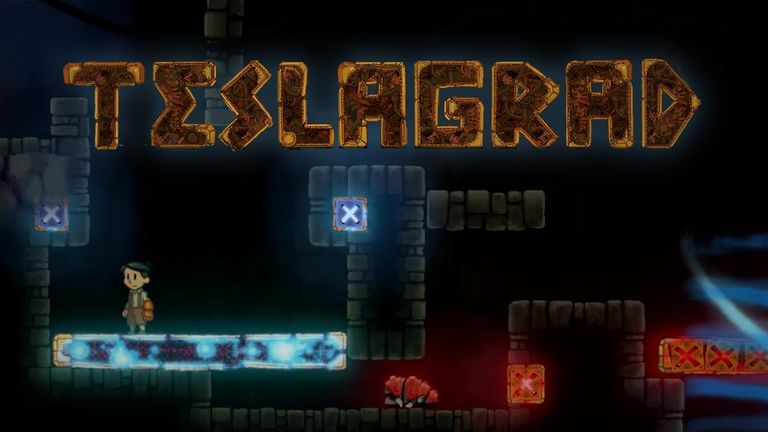
Teslagrad begins with an escape, that of a father who has to leave his newborn son behind to protect him from the war, and continues years later with another, that of the son who has to flee from the repression of an army that bears a distinct resemblance to the Russian communists.
Escaping the city, he finds a castle that holds the keys to what happened in the past and a power that can shape the future.
Rain Games' commitment to narrating without taking control away from the player - neither cutscenes nor dialogue - plays very much in its favour, turning the settings into an integral part of the story: murals, plays, engravings on the walls.
It provides the world with a background for those who want to know it, but it is not an obstacle for those who just want to move forward. The plot is not extremely complex, but it manages to maintain interest.
Framed in the tradition of the best metroidvanias , it starts out as a platformer with easy jumps and simple puzzles, but it doesn't let the player fall asleep. Each room teaches a lesson, and progressing depends on internalizing them to apply them almost without thinking in the following rooms.
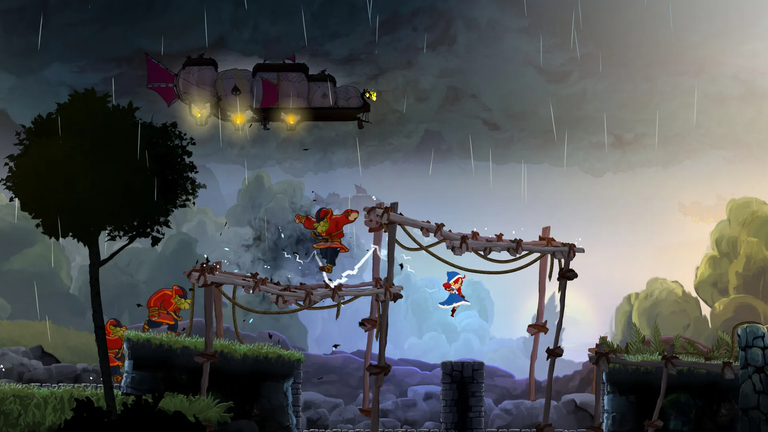
The main mechanics are magnetism and electricity: blue elements attract red ones but repel the rest of the blue ones and vice versa. Rain Games excels by starting from this small base and continually expanding it with new concepts until it reaches great complexity. They know where to place puzzles that refresh our memory and combine everything we have learned, stacking layers and layers of knowledge until we are able to execute complex maneuvers in tenths of a second without hardly thinking.
The puzzles range from flipping a switch to spending ten minutes in a room analyzing all the elements on the screen to find the only possible route. This process happens almost without us realizing it. Don't let the first quarter of an hour fool you: towards the end of the game you will be sweating bullets to advance. The difficulty curve is almost perfect: it only becomes unbalanced in the final bosses. Here the game gets tough, asking us to give it our all and to remember everything we have done in the previous puzzles. There is no life bar; one touch and we start from scratch.
For many people this can be frustrating to the point of being frustrating, and Teslagrad is certainly not for those who will put down a game if they fail to beat a boss on the fourth try. The game penalizes the slightest mistake and forces us to replay a boss if we fail at the last moment.
On the first attempt we will die five seconds after starting, but soon we will start to get used to the boss, moving with agility around the stage dodging all the attack routines, laughing at the self from five minutes ago who was unable to get away from a beam that takes up the entire screen.
The term “Metroidvania” comes from this video by Scott Sharkey for 1UP . It defines a subgenre of side-scrolling platformers. Its particularity is that we have an open world from the beginning with inaccessible areas that require new skills or items to continue (double jump, hooks, bombs, etc.). As the name suggests, the most notable representatives of this genre are Metroid and Castlevania.
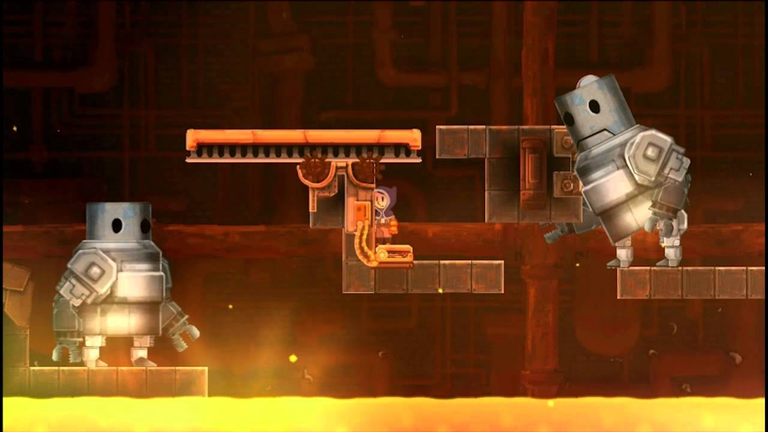
Teslagrad makes you feel like a better player when you beat a boss or finish a difficult puzzle. At first it relies on trial and error to help you learn, but then it leaves it up to you to be able to face the challenges. In that sense it reminds me of Dark Souls and, in fact, with some bosses (especially the penultimate one) I uttered some expressions that I don't remember having said since I played this one.
The only times I felt unfairly punished were when the physics just didn't quite work out how they should. They weren't a lot, but they were annoying. Cubes tend to bounce around a bit randomly, with no way to prevent direction, and lava cubes can kill you with no way to avoid them.
It will take us about 6-7 hours to get to the credits, and I think that's a great success. Every boss, every room, and every puzzle has its place within the learning process we mentioned before. They are part of a greater whole and as such, nothing is out of place. Although I would have loved to have more puzzles to solve, lengthening the game would have burdened the pace.
Once you finish the game, you can collect 36 scrolls scattered around the world. They require you to return to a puzzle you already know the solution to and give it a twist to reach a seemingly impossible place. The scrolls add details to the game's background and unlock a very important extra, becoming more than just a resource to add a couple more hours to the game.
"Teslagrad has clever level design, a gorgeous visual, and a use of mechanics that forces the player to pay attention and learn."
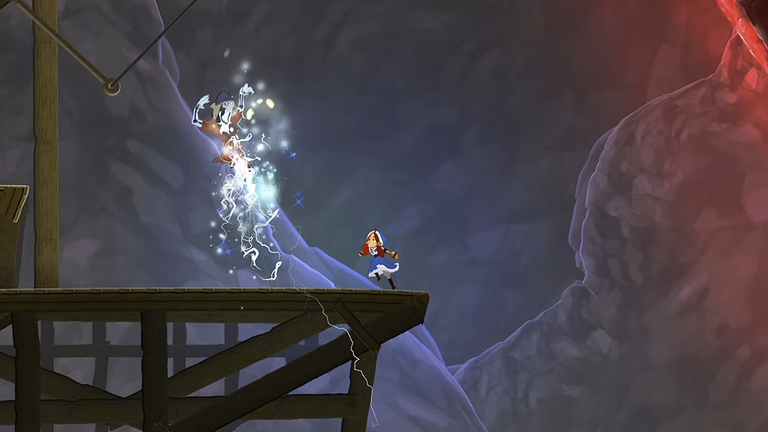
As you can see in the screenshots, the designs are exceptional, with locations that go from industrial factories to more natural terrain without it being jarring in the least and with enough character so that we later remember what they were like and how to get to the rooms we want to return to. Although if we look closely at the animations they could have a few more sprites, the truth is that the game is so fine that this detail is left as an unimportant anecdote.
The soundtrack tends to stay a bit more in the background for most of the game, coming to the forefront during boss fights to add more tension - as if it were needed - but what does stand out are the sound effects, which give character to the creatures that inhabit the castle and which in some cases are engraved in memory. The laser beam of a certain boss will haunt me in nightmares for several years.
Teslagrad has clever level design, a great visual, and a use of mechanics that forces the player to pay attention and learn. Bosses can be frustrating and the physics aren't as good as they should be at times, but nothing compares to the rewarding quality of victory. The first few minutes are eye-catching until the gameplay makes its appearance to fully enthrall us, proving that if you know how to master your craft, you don't need to innovate to be great.

Teslagrad comienza con una huida, la de un padre que tiene que dejar atrás a su hijo neonato para protegerle de la guerra, y continúa años más tarde con otra, la del hijo que tiene que huir de la represión de un ejército con un parecido nada disimulado a los comunistas rusos.
Escapando de la ciudad encontrará un castillo que contiene las claves de lo que ocurrió en el pasado y un poder que puede moldear el futuro.
El empeño de Rain Games por narrar sin quitar el control al jugador -ni escenas ni diálogos- juega muy a su favor, convirtiendo los escenarios en una parte integral de la historia: murales, obras de teatro, grabados en las paredes.
Dota al mundo de un trasfondo para quien quiera conocerlo, pero no es obstáculo para quien solo quiere avanzar. El argumento no tiene una enorme complejidad, pero sabe mantener el interés.
Enmarcado en la tradición de los mejores metroidvania, comienza siendo un plataformas con saltos fáciles y puzles sencillos, pero no permite que el jugador se duerma. Cada estancia enseña una lección, y avanzar depende de interiorizarlas para aplicarlas casi sin pensar en las siguientes habitaciones.
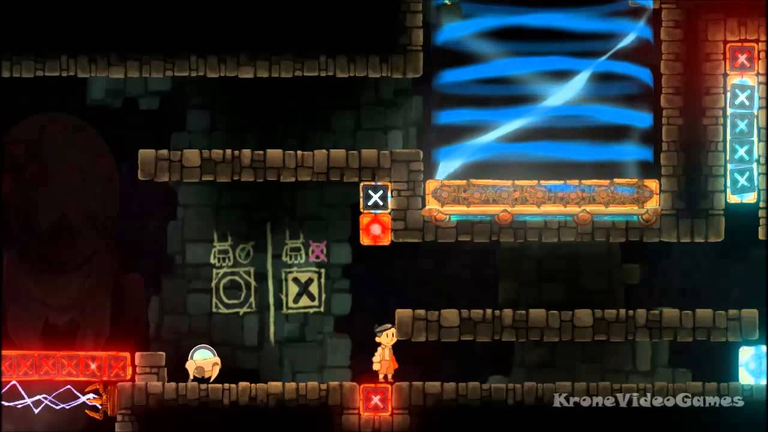
Los protagonistas de las mecánicas son el magnetismo y la electricidad: los elementos azules atraen a los rojos pero repelen al resto de azules y viceversa. Rain Games se luce partiendo de esa pequeña base y expandiéndola de forma continua con conceptos nuevos hasta alcanzar una gran complejidad. Saben dónde colocar puzles que nos refresquen la memoria y que combinen todo lo aprendido, apilando capas y capas de conocimiento hasta que seamos capaces de ejecutar maniobras complejas en décimas de segundo sin apenas pensar.
Los puzles van de pulsar un interruptor a tirarse diez minutos en una habitación analizando todos los elementos en pantalla para buscar la única ruta posible. Este proceso ocurre casi sin que nos demos cuenta. No dejéis que os engañe el primer cuarto de hora: hacia el final del juego sudaréis la gota gorda para avanzar. La curva de dificultad es casi perfecta: sólo se desajusta en los jefes finales. Aquí el juego se pone duro, nos pide que lo demos todo y que recordemos todo lo que hemos hecho en los puzles anteriores. No existe barra de vida; un toque y empezamos de cero.
Para mucha gente esto puede llegar al extremo de ser desesperante, y desde luego Teslagrad no es para quien deje de lado un juego si no se pasa un jefe al cuarto intento. El juego penaliza el más mínimo error y nos obliga a repetir un jefe si fallamos en el último momento.
En el primer intento moriremos a los cinco segundos de empezar, pero pronto empezaremos a hacernos al jefe, a movernos con agilidad por el escenario esquivando todas las rutinas de ataque, riéndonos del yo de hace cinco minutos que era incapaz de apartarse de un rayo que ocupa toda la pantalla.
El término “Metroidvania” nace de este vídeo de Scott Sharkey para 1UP. Define subgénero de los plataformas de scroll horizontal. Su particularidad es que tenemos un mundo abierto desde el principio con zonas inaccesibles que requieren de habilidades o ítems nuevos para continuar (doble salto, ganchos, bombas, etc). Como bien indica el nombre los representantes más notables de este género son Metroid y Castlevania.
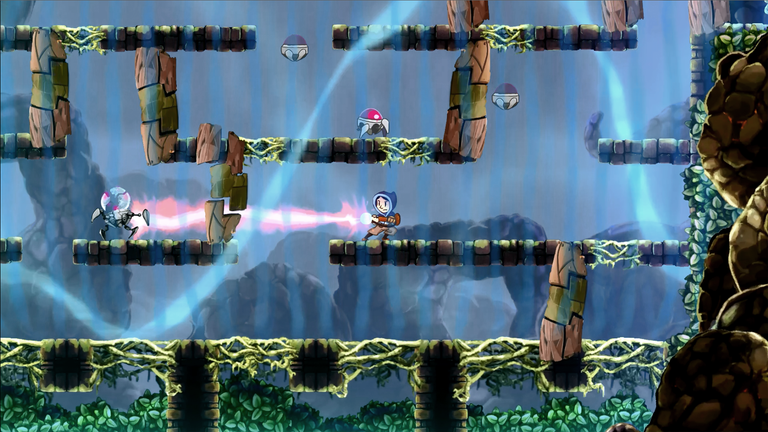
Teslagrad te hace sentir mejor jugador cuando superas un jefe o terminas un puzle de los más difíciles. Al principio confía en la prueba y error para que aprendas, pero luego deja en tu mano que seas capaz de afrontar los retos. En ese sentido me recuerda a Dark Souls y, de hecho, con algún jefe (sobre todo el penúltimo) he soltado alguna expresión que no recordaba haber dicho desde que jugué a éste.
Los únicos momentos en que me he sentido castigado de forma injusta han sido aquellos en los que las físicas no han terminado de funcionar como deberían. No han sido abundantes, pero sí molestos. Los cubos tienden a rebotar de manera un poco aleatoria, sin manera de prevenir la dirección, y cuando éstos son de lava pueden matarte sin que haya manera de esquivarlos
Llegar a los créditos nos llevará unas 6-7 horas, y creo que es un gran acierto. Cada jefe, cada habitación y cada puzle tienen su lugar dentro del proceso de aprendizaje que comentábamos antes. Forman parte de un gran todo y como tal no hay nada fuera de lugar. Aunque me hubiera encantado tener más puzles que resolver, alargar el juego se podría haber cargado el ritmo.
Al terminar el juego podemos recoger 36 pergaminos esparcidos por el mundo. Requieren que volvamos a un puzle del que ya conocemos la solución y le demos una vuelta de tuerca para alcanzar un lugar en apariencia imposible. Los pergaminos añaden detalles del trasfondo del juego y desbloquean un extra muy importante, convirtiéndose en algo más que un recurso para añadir un par de horas más al juego.
"Teslagrad tiene un diseño de niveles inteligente, un aspecto excelso y un uso de las mecánicas que obliga al jugador a estar atento y aprender."
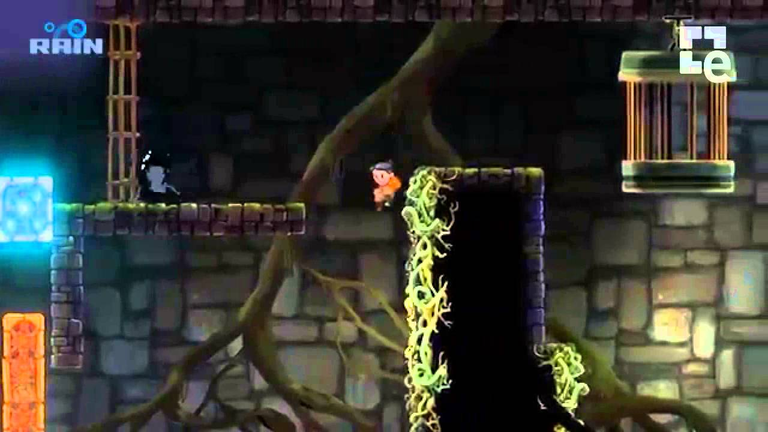
Como pueden comprobar en las capturas, los diseños son excepcionales, con localizaciones que van de fábricas industriales a terrenos más naturales sin que chirríe lo más mínimo y con el carácter suficiente como para que luego recordemos cómo eran y cómo se llegaba a las estancias a las que nos interesa volver. Aunque si nos fijamos con detenimiento las animaciones podrían tener algún sprite más, lo cierto es que el juego va tan fino que este detalle se queda en una anécdota sin importancia.
La banda sonora suele mantenerse algo más al margen durante la mayoría del juego, pasando a un primer plano durante los jefes finales para añadir más tensión -como si hiciese falta- pero lo que sí destacan son los efectos de sonido, que le dan carácter a las criaturas que habitan el castillo y que en algunos casos se graban en la memoria. El rayo láser de cierto jefe me perseguirá en pesadillas durante varios años.
Teslagrad tiene un diseño de niveles inteligente, un aspecto excelso y un uso de las mecánicas que obliga al jugador a estar atento y aprender. Los jefes pueden llegar a frustrar y las físicas no son todo lo bueno que deberían en algunas ocasiones, pero nada es comparable a lo gratificante de la victoria. Los primeros minutos entra por los ojos hasta que el gameplay hace su aparición para terminar de atraparnos, demostrando que si sabes dominar lo tuyo no hace falta innovar para ser grande.
- Sources/Fuentes: Teslagrad on Steam



| Blogs, Sitios Web y Redes Sociales / Blogs, Webs & Social Networks | Plataformas de Contenidos/ Contents Platforms |
|---|---|
| Mi Blog / My Blog | Los Apuntes de Tux |
| Mi Blog / My Blog | El Mundo de Ubuntu |
| Mi Blog / My Blog | Nel Regno di Linux |
| Mi Blog / My Blog | Linuxlandit & The Conqueror Worm |
| Mi Blog / My Blog | Pianeta Ubuntu |
| Mi Blog / My Blog | Re Ubuntu |
| Mi Blog / My Blog | Nel Regno di Ubuntu |
| Red Social Twitter / Twitter Social Network | @hugorep |

| Blurt Official | Blurt.one | BeBlurt | Blurt Buzz |
|---|---|---|---|
 |  |  |  |

 |  |  |  |
|---|
